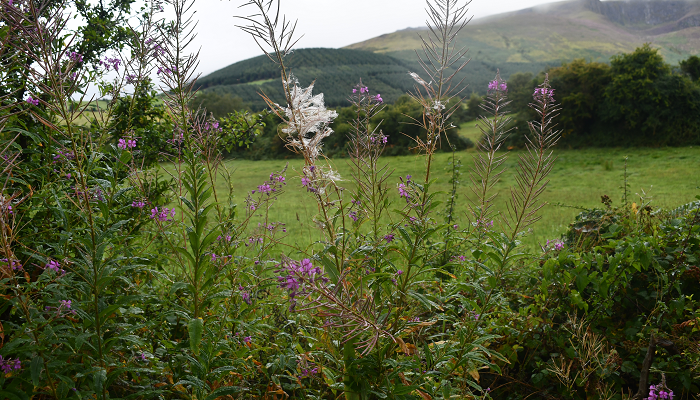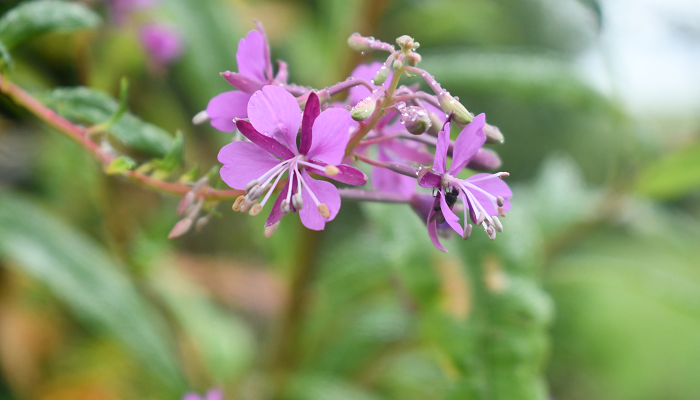10 September 2022
Growing Wild – willowherb and water mint

Catherine Keena, Teagasc Countryside Management Specialist takes a closer look at some of our native Irish biodiversity to look out for in the countryside. Here she shares some interesting facts of nature about willowherb and water mint
Willowherb

Look out for willowherbs with their four petalled pink flowers, perched on top of the very long ovaries, which split into four to release small seeds with a tuft of cottony hairs as parachutes to float away in the air. There are many willowherbs. Rosebay is native to rocky places on mountains and has become widespread on disturbed ground – probably introduced or as a garden escape or discard. It is also known as firewood because it colonises ground that is burnt. Great willowherb, is native and grows along watercourses, creeping along using rhizomes or underground stems.
Water mint

Look out for water mint, with pale purple or lilac flowers in a pom pom cluster at the top of the flowering spikes. The plants can also be purplish with softly hairy leaves in opposite pairs on square stems. It is easily recognised by the unmistakable mint smell when crushed. Mint has been used in the past to help with digesting food – similar to eating after-dinner mints. It was also strewn on the floor to deter insects with its scent when crushed. Water mint grows in damp places and is part of our native Irish biodiversity.
See previous Growing Wild articles below:
- Growing Wild – dandelion and greater stitchwort
- Growing Wild – willow, primrose and lady’s smock
- Growing Wild – whitethorn and cow parsley
- Growing Wild – bluebells and guelder rose
- Growing wild – Honeysuckle and Foxglove
- Growing Wild – Elder and Ragged Robin
- Growing wild – dog rose and meadowsweet
- Growing wild – Privet and Lady’s Bedstraw
- Growing Wild – Bird’s foot trefoil and Knapweed
Keep an eye on Teagasc Daily for another Growing Wild later in the month. Learn more from Teagasc about Biodiversity & Countryside
